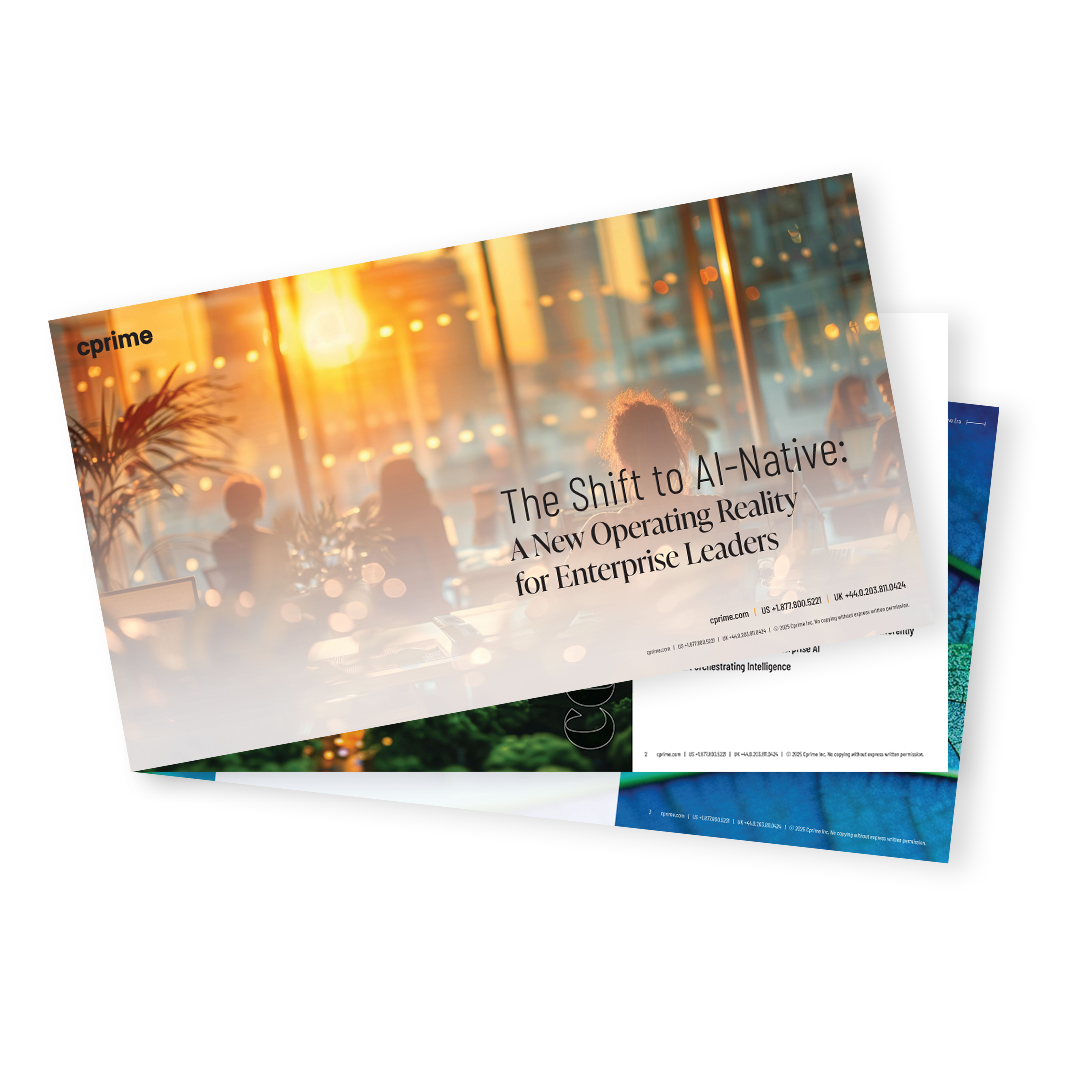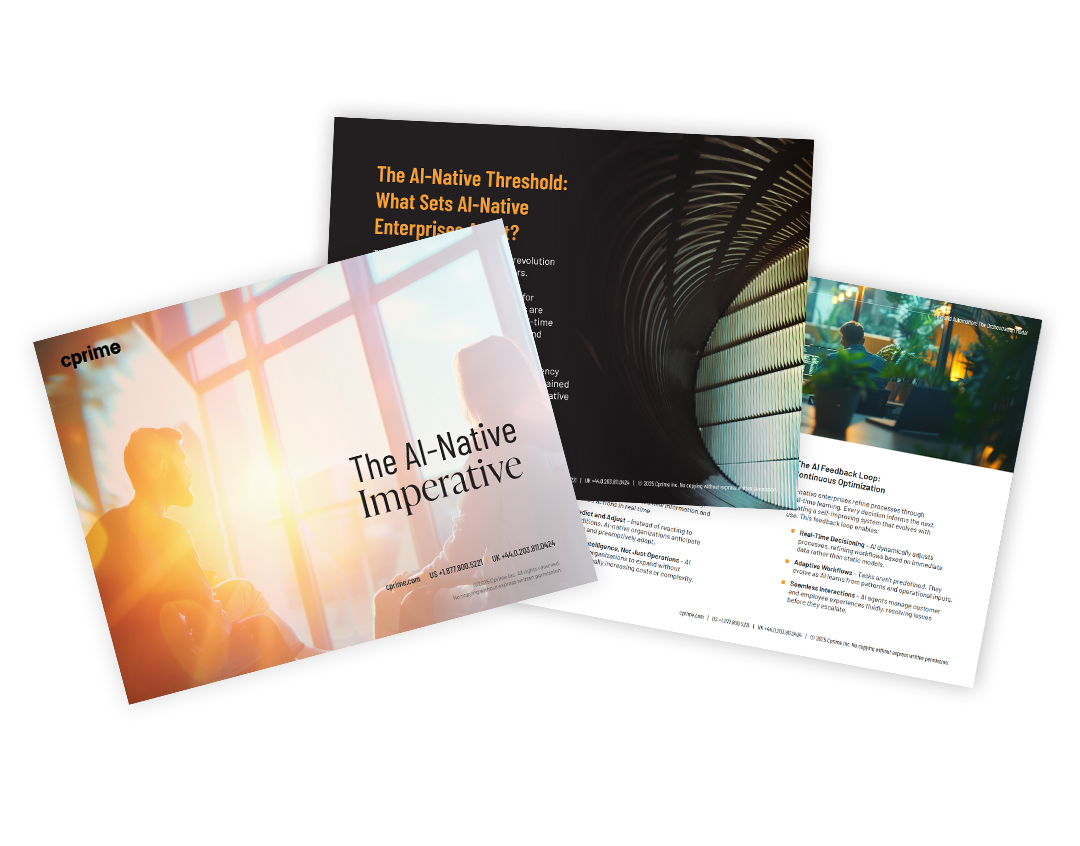From Agile and Digital Transformation to AI Transformation: The Natural Evolution
In Technological Revolutions and Financial Capital, Carlota Perez plots the evolution of societal, industrial, and economic capital based on technological revolutions that occurred over the last few hundred years. She opines that these disruptive trends happen every generation or so.
It started with the Industrial Revolution in the 1770s, followed by the Age of Steam and Railways in the early 19th century, then the Age of Steel and Heavy Engineering in the late 19th century, bringing us to the Age of Oil and Mass Production in the 20th century. We conclude with the current Age of Software and Digital into the 21st century.
Each revolution has a regular sequence of three distinct phases:
- Installation Period: New technology and financial capital combine to create a “Cambrian explosion” of new entrants (“Cambrian explosion” is a biological term for a large diversity of life forms appearing over a relatively short time)
- Turning Point: Existing businesses either master the new technology or decline and become relics of the last age
- Deployment Period: The production capital of the new technological giants starts to take over
Carlota also explains that she has observed from history that during the Installation Period, while there is an influx of financial capital to support the new entrants, this is followed by some form of “crash” or multiple crashes.
If we consider the Age of Oil and Mass Production, we had the Roaring Twenties, but in 1929, we had the Wall Street crash, which affected markets around the world. We then encountered the longest turning point in history, which is often when we see a period of political uncertainty. In the 1930s, we saw the rise of fascism in Europe through to the conclusion of the Second World War in 1945. Those that survived took advantage of the biggest boom in history, with the likes of Toyota coming to the fore in car manufacturing.
If we turn to the Age of Software and Digital, we had the dotcom crash that peaked in 2000 and the global financial crash in 2008. Carlota was on stage in Paris in 2019, presenting at Sogeti’s Utopia for Beginners’ Summit about our digital future, and she said:
“Maybe we will have another crash ahead, but after that, we should have the possibility of a sustainable global information technology Golden Age.” (Carlota Perez, 2019)
Bearing in mind this was in 2019. Then, starting in March 2020, we had the unprecedented Covid-19 pandemic. It was as if Perez predicted this months earlier.
Post Covid-19 pandemic, it is clear that we are now firmly in the Deployment Phase of the Age of Software and Digital.
We often get asked, “What is the next technology revolution?” We are neither futurists, nor clairvoyants. That said, we know that the rise of new technologies comes with the decline of the previous technology. We then have a period of bubble prosperity with financial capital supporting the new entrants.
If we follow the current financial capital, then we will see investment in artificial intelligence (AI), big data, and the cloud.
Research by PWC found 72% of executives believe that AI will be the most significant business advantage of the future.
The company Snowflake, which provides data warehouse-as-a-service, was the biggest software IPO in 2021 and implied five-year sales growth of 819%. In the cloud, there are three or four major providers, and the worldwide end-user spending on public Cloud services was forecast to grow to $332.3 billion in 2021.
So what is the ‘Natural Evolution’ from the Age of Software and Digital to the Age of AI? Is there any difference between the two ages? What do leaders have to consider in this new age if they believe that this will give them the most significant advantage?
AI-Native vs. Digital-First: The Divide That Matters
We have already seen and experienced those organizations that did not make the digital shift, especially in the retail industry, accelerated by the COVID-19 Pandemic. As Mik Kersten highlighted at the time in his book Project to Product:
“Those that master digital business models and software at scale will thrive. Many more, unfortunately, will not.”
In past disruptions, digital-native giants like Amazon, Google, and Netflix upended industries by mastering cloud, data, and software-driven scale. Today, AI-native challengers are outpacing even those digital leaders.
Companies that hesitate to make this leap will soon find their digital-first strategies obsolete. This marks a new competitive order; one that goes beyond traditional waves of digital transformation.
Digital-first companies still operate in a deterministic model, making decisions based on historical data and predefined logic that delivers the same outcome, for every customer, every time. AI-native enterprises function differently. Real-time intelligence drives every action, outcomes vary based on context, and individualization and immediacy define the customer experience.
AI-native enterprises distinguish themselves by how they think, operate, build, and engage, with AI embedded at the center of the business. It goes far beyond the tools they adopt.
What Do You Need to Do as a Leader?
Leading in an AI world demands a shift in mindset, skills, and culture, going well beyond a basic understanding of technology. Here’s what leaders need to focus on to truly embrace and thrive in an AI-driven world:
-
Adopt a Learning Mindset
-
-
- Stay curious about AI and emerging tech; leaders don’t need to be data scientists, but they do need to understand the fundamentals.
- Encourage continuous learning across teams to demystify AI and build confidence in using it.
-
-
Develop a Clear AI Strategy
-
-
- Connect AI initiatives to business outcomes, not just tech for tech’s sake.
- Define where AI can add the most value (e.g., improving customer experience, automating processes, augmenting decision-making).
-
-
Create a Culture of Experimentation
-
-
- Promote a test-and-learn culture where teams can explore AI use cases safely.
- Accept that failures are part of innovation, and celebrate learning from them.
-
-
Empower Cross-Functional Teams
-
-
- AI success lies at the intersection of tech, data, business, and people.
- Build diverse teams (data scientists, domain experts, designers, etc.) that can co-create AI solutions.
-
-
Champion Ethical AI and Data Responsibility
-
-
- Ensure AI is used ethically and responsibly: transparent, explainable, and bias-aware.
- Treat data as a strategic asset, and invest in governance, privacy, and compliance.
-
-
Focus on Augmentation, Not Just Automation
-
-
- Use AI to enhance human intelligence, not just replace it.
- Look for ways to empower employees through tools that make them smarter, faster, and more creative.
-
-
Lead by Example
-
- Be visible in your support for AI transformation.
- Model the behaviors you want to see: curiosity, collaboration, courage, and openness to change.
AI reshapes the very nature of enterprise leadership. The leaders who embrace this early and thoughtfully will shape the future.
Is Agile dead? Spoiler alert – NO!
The essence of agile ways of working is about being adaptive, collaborative, and focused on delivering value quickly and continuously. Here’s a breakdown of its core principles:
Iterative and Incremental Delivery
- Work is delivered in small, usable pieces (iterations or sprints), allowing teams to adapt based on feedback and change.
Collaboration and Empowered Teams
- Cross-functional teams work together closely, with shared ownership and accountability.
- Stakeholders and customers are involved regularly to ensure alignment with business needs.
Continuous Learning and Improvement
- Regular retrospectives help teams reflect and improve their processes.
- Embrace fail-fast, learn-fast mindset to innovate without fear of failure.
Customer-Centricity
- Focuses on delivering the highest value to the customer as early and often as possible.
- Requirements evolve based on real user feedback, not assumptions.
Transparency and Visibility
- Progress is visible to everyone through tools like Kanban boards, burn-down charts, and daily stand-ups.
- Encourages honest conversations and quick surfacing of blockers or issues.
Adaptability Over Predictability
- Plans are flexible and open to change, responding to new information is more valuable than following a rigid plan.
In short: Agile is about delivering value fast, working collaboratively, and continuously improving. It’s less about a strict methodology and more about a mindset that enables speed, flexibility, and resilience in a constantly changing world.
Are all these principles needed in an AI world? Yes, more than ever!
The Future is AI-Native
There have been many stages in digital evolution. Some slow and gradual, some sudden and disruptive. But few have had this level of impact.
AI-native enterprises are setting the pace. They build architectures that respond to change in real time, continuously optimize outcomes, and reduce friction across every level of operation.
This is the new standard. Companies that embed AI deeply into their DNA will unlock competitive velocity.
The next move is yours. How will you lead in the AI-native era?




